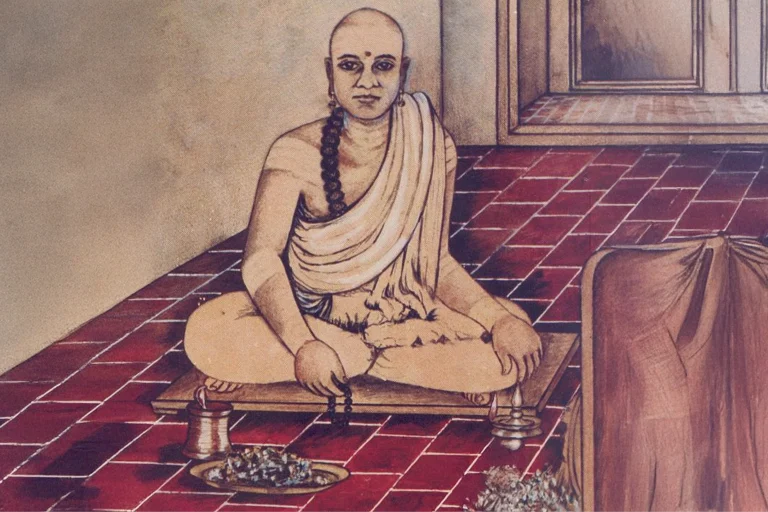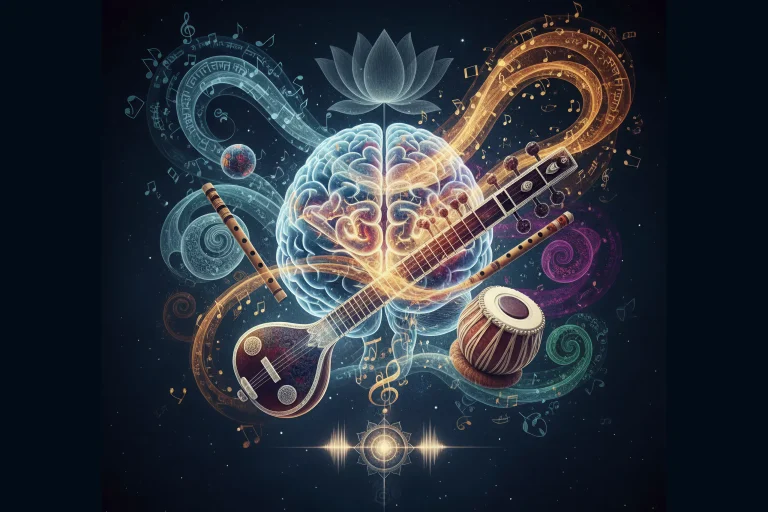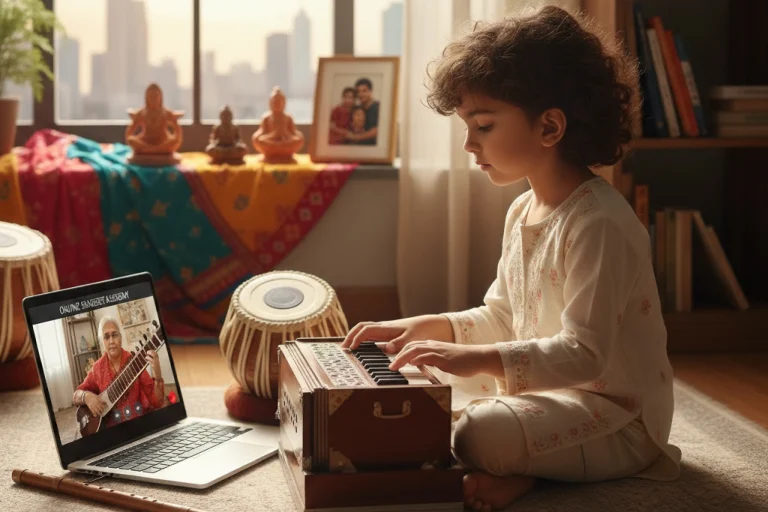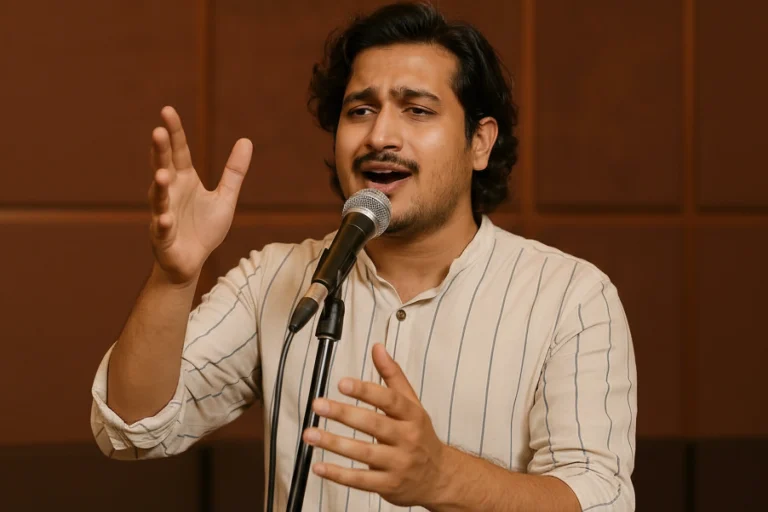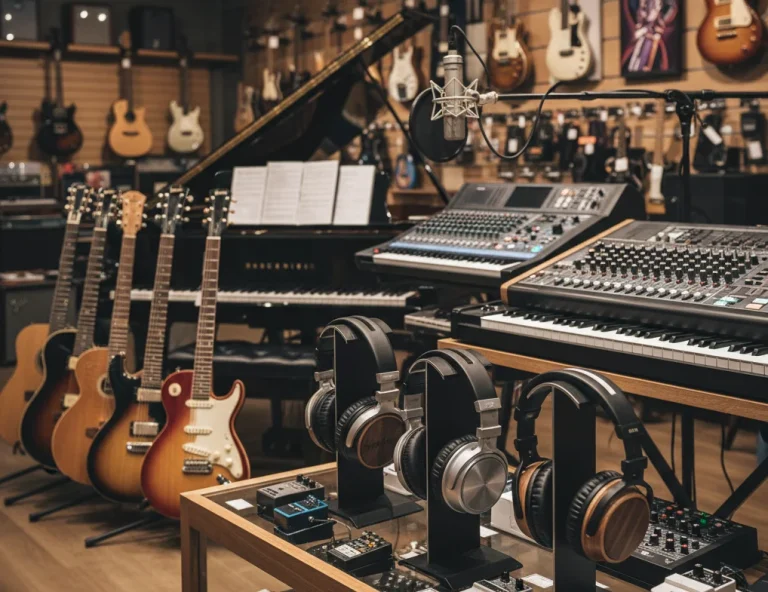All Topics
- Alchemizing Music Concepts for Students
- Artist Spotlight
- artium gift card
- Artium Maestros
- Artium News
- buying guide
- Carnatic Music
- Devotional Music
- Editorials by Ananth Vaidyanathan
- Film Music
- Guitar
- Hindustani Classical Music
- Indian Classical Music
- Indian Folk Music
- Insights
- Instruments
- Karaoke Singing
- Keyboard
- Kids Music
- maestros
- Music Education
- Music for Kids
- Music Industry
- Music Instruments
- Music Legends
- Music Theory
- Music Therapy
- Piano
- piano guide
- Success Stories
- Tamil Film Music
- Telugu Film Music
- Time Theory
- Tools
- Uncategorized
- Vocal Singing
- Vocals
- western classical music
- western music
- Western vocal music
Mastering Taal and Laya: Essential Elements of Indian Classical Music
Mastering Taal and Laya: Essential Elements of Indian Classical Music
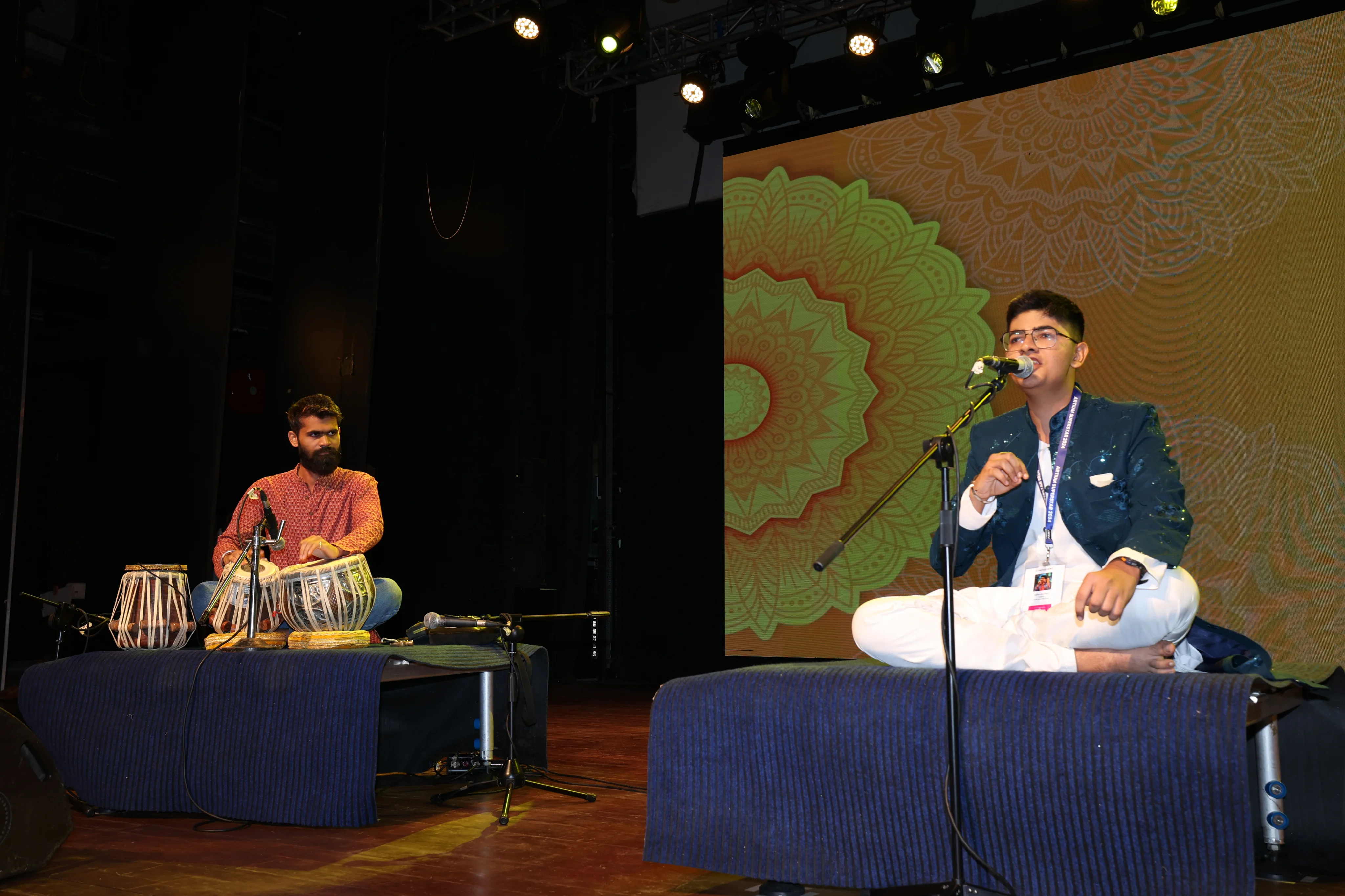
Table of Contents
If you are en route to begin your journey to learn Indian classical music, then understanding Taal and Laya is absolutely essential. These elements are the very foundation of singing, instrumental music and classical dance. We have seen music learners grasp these elements early, progress more quickly, and perform with greater confidence.
Taal and Laya are two of the important elements of Indian classical music. They are musical concepts that offer rhythmic lifelines, seamlessly connecting melody and movement. So, whether you are listening to Hindustani bandish or a brisk Carnatic krithi, these two elements give the performance structure, pace, and emotional depth.
So, let us dive into how you can master taal and laya in your classical singing lessons.
But before that…
If you’re really excited to start your journey in music, start with a free trial lesson today!
Understanding Taal and Laya in Indian Classical Music
Taal is the framework of rhythm in Indian classical music. It consists of a specific number of beats (called matras) arranged in cycles (avartan). Each beat is marked by claps (taali), waves (khaali), or finger taps. In Hindustani classical music, some of the most popular taals include:
- Teentaal (16 beats)
- Ektaal (12 beats)
- Jhaptal (10 beats)
- Dadra (6 beats)
In Carnatic classical music, the taal system is even more intricate. It comprises systems such as Adi Talam, Rupaka Talam, and others, often layered with jatis and gatis.
Each taal brings its own flavour to a composition. A vilambit (slow) teentaal might convey introspection, while a drut ektaal bursts with energy.
Also Read: [An Introduction to Taal in Indian Classical Music] to understand the basics and explore commonly used rhythmic cycles in both Hindustani and Carnatic music.
If taal is the skeleton, laya is the breath that animates it. Laya refers to the tempo or the spacing between beats. There are three basic types of laya:
- Vilambit Laya: Slow tempo, typically used in the opening section of a raga.
- Madhya Laya: Medium tempo, commonly used in khayal or bhajan singing.
- Drut Laya: Fast tempo, often seen in tarana, jod, or brisk Carnatic passages.
Mastering laya means developing a consistent internal sense of timing. This helps in maintaining flow, even during complex improvisations. In our online singing classes, we utilise rhythm exercises and tala loops to help students develop taal and laya in music as an instinctive skill.
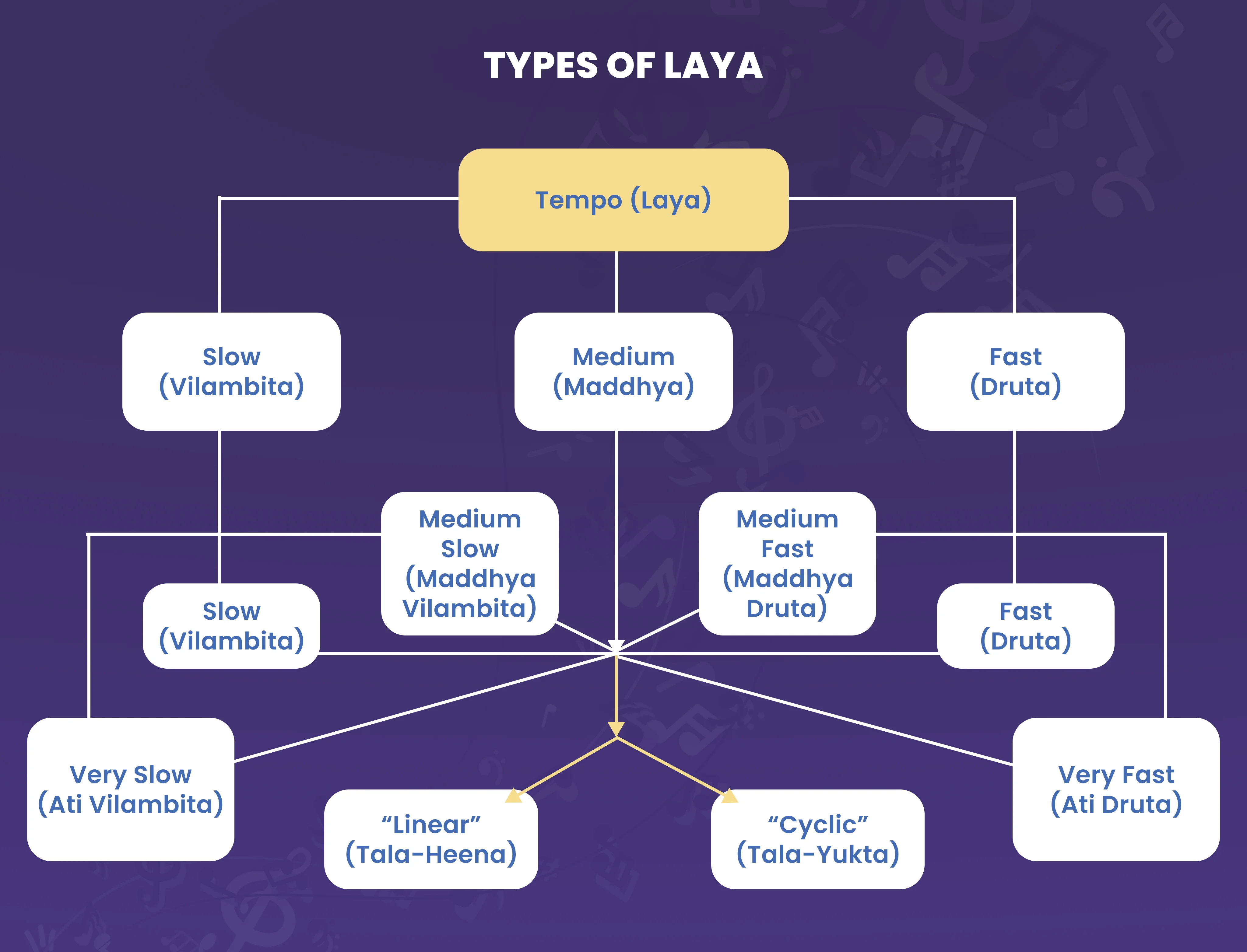
The Relationship Between Taal and Laya
Though taal and laya are distinct, they are deeply interconnected. Taal provides the structure, while laya determines the pace of that structure. Think of taal as a road map and laya as your travel speed.
In both Hindustani classical music and Carnatic classical music, the interplay between taal and laya in music makes performances dynamic and expressive. A singer may tentatively begin a vilambit khayal and slowly accelerate to Madhya or drut laya, showcasing their command over the rhythm.
Understanding how to maintain accuracy in laya while cycling through the taal repeatedly is a critical milestone in classical singing lessons.
Techniques to Master Taal and Laya
Here are some practical strategies that can help you get better at understanding and applying taal and laya in music:
- Clapping Exercises: Practice clapping the theka (basic rhythm) of different taals while listening to compositions.
- Use a Metronome or Taal App: Tools like Artium Academy’s metronome app help keep time and simulate tabla or mridangam accompaniment.
- Count Matras Verbally: Recite “1-2-3…” or traditional bols like dha, dhin dhin dha to internalise rhythm.
- Practice with a Lehra or Tanpura: Use a drone and lehra loop to simulate live accompaniment.
- Record and Playback: Listen to your own singing or playing to identify timing flaws.
Students in our online music classes often pair these with mirror exercises, where they match hand movements to syllables, just as they did during oral traditions.
The Influence of Taal and Laya on Different Indian Classical Music Forms
Every genre within Indian classical music is guided by the rhythmic principles of taal and laya:
- Khayal: Emphasises elaborate rhythmic improvisation with different layas and intricate taans.
- Dhrupad: Maintains very strict taal adherence, with deep emphasis on vilambit and madhya laya.
- Tarana and Tappa: Known for their fast-paced execution, demanding mastery of drut laya.
- Carnatic Kritis and Alapana: Showcase a sophisticated blend of tala cycles and speed variations.
Each form challenges the student differently, making rhythmic discipline a key part of every classical singing lesson.
The Role of Taal and Laya in Dance and Instrumental Music
Taal and laya are not limited to vocal music. In fact, they are just as foundational in dance forms like Bharatanatyam, Kathak, and Odissi as they are in instrumental performances.
- Dance: Dancers often demonstrate taals using intricate footwork, matching hand gestures and rhythm syllables.
- Instruments such as Tabla, mridangam, sitar, veena, and even the flute follow taal patterns and explore laykari (tempo improvisation) to a significant extent.
For instance, in a tabla solo, the artist may explore multiple laya speeds within a single taal cycle. Similarly, in veena or sitar recitals, the jod and jhala sections explore varying speeds and rhythmic complexities.
The Path to Mastering Taal and Laya In Music
Mastery of taal and laya in music doesn’t come overnight. It’s a gradual journey that requires:
- Regular practice with clear beat cycles and rhythmic recitation.
- Listening actively to experienced performers.
- Practising with percussionists to experience the real-time dynamics of sam and avartan.
At Artium Academy, we are proud to have Smt. Shubha Mudgal, renowned Hindustani vocalist, and Smt. Aruna Sairam, one of India’s most celebrated Carnatic musicians, are our faculty heads.
After mesmerising the audience with their voices for years, these legends have extended their experience to develop a curriculum that enables students to learn the intricacies of taal and laya. So, whether you’re a beginner or an adult looking to revive your passion for music, developing these rhythmic skills will enhance every note you sing. If you’re ready to explore the beauty of rhythm and melody in depth, there’s no better time to learn Indian classical music than now.
Final Notes
Suppose you’re curious to experience the pulse of Indian classical music and train with some of the finest minds in the field. In that case, at Artium Academy, we offer a structured learning environment with personalised instruction, practice tools, and certified curriculums. From classical singing lessons to advanced rhythm training, every course is designed to make you musically confident, regardless of age or skill level.
We invite you to Learn Music Online through our expertly designed programs that bring the magic of Hindustani classical music and Carnatic traditions to your home. Through our faculty, tech-enabled tools, and rhythm-focused training, you’ll learn to stay in tune and in perfect time.
Let your taal and laya in music journey begin here. Book A Free Trial today.

